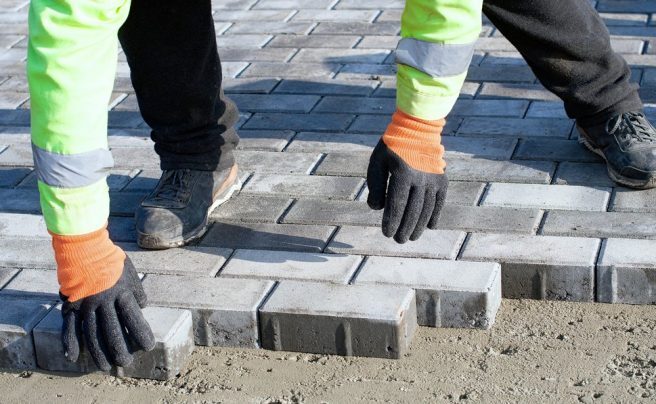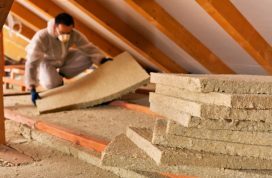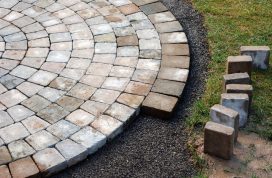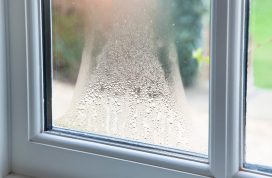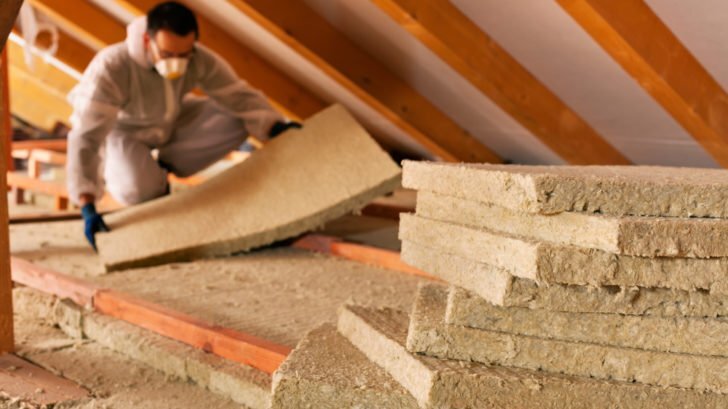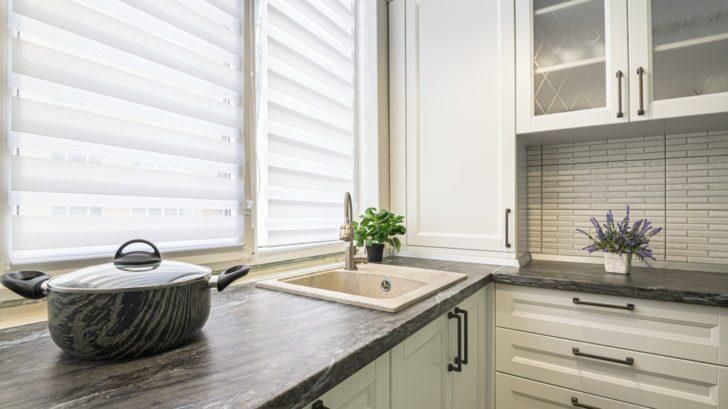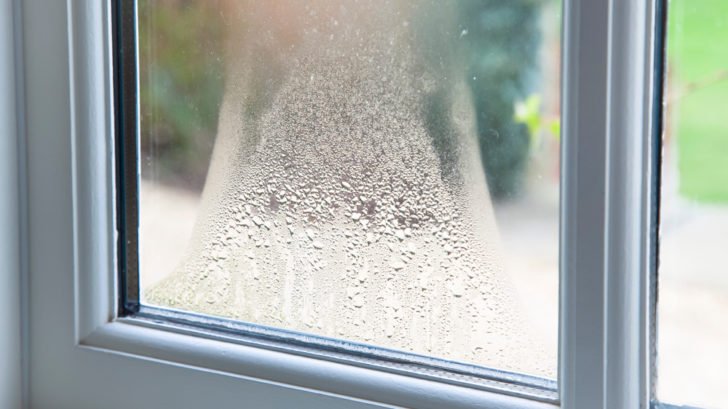In this guide, we’ll be looking at six materials commonly used for patios in the UK, namely: gravel, poured or stamped concrete, concrete pavers, brick, stone, and tiles. Next, we’ll discuss the cost, durability, style, and installation difficulty of these materials and shed light on the pros and cons of using them in flooring a patio. Lastly, we will recommend how to choose the best material for your patio.
As mentioned, we’ll be reviewing the following materials:
- Gravel
- Poured or stamped concrete
- Concrete pavers
- Brick
- Stone
- Tile
Gravel

With the modern appearance and in varieties of colours, designs, and textures, gravel is an inexpensive material that is cost-effective and easy to install for patio surfacing. You can install the gravel in any desired shape or form. There are two types of gravel commonly used for patios, namely: river rock and crushed stone. This material is loose and doesn’t need to be set or hardened and require relatively low maintenance.
However, if you don’t always want to collect the loose gravel when they scatter beyond the patio area, you might need to create a system to keep the gravel within the patio. Gravel helps to slow down weed growth and offers good drainage—compared to other patio materials—since it prevents your patio from being water-logged after a rainfall.
On the other hand, snow removal in gravel patios is usually tedious, and some people find walking on gravel patios rather uncomfortable. You might also need to buy gravel in bulk if you’re not sure how much you will need.
| Average cost per m2 | Durability | Style | Installation difficulty |
|---|---|---|---|
| £10-£40 | Very durable when properly maintained | Contemporary homes and gardens | Beginner/DIYer |
Poured or stamped concrete
Concrete is one of the most affordable, hard-surface, and customisable deck materials in the UK. It’s made by mixing concrete aggregates and paste. The paste is usually a combination of water and cement. Since concrete is versatile and adaptable, you can have it in different designs such as stamped, scored, coloured, decorated with inlays, painted, patterned, brushed, and surfaced with other materials. Stamped concrete, for instance, is made by pressing flexible polyurethane stamps into freshly poured concrete.
Using concrete as patio material has its drawbacks too. Concrete is susceptible to freezing and thawing cycles. This cycle can cause considerable damage to a concrete patio, leading to cracks and harming the overall integrity of the concrete. Concrete patios also tend to fade and wear out when used for a long time.
Also, there is the problem of poor drainage when a concrete patio isn’t correctly installed. Poured concrete is particularly prone to getting easily stained, and you may also need to constantly wash a concrete patio with a hard brush, bleach, and water. Additionally, the installation of concrete patios requires hiring a professional contractor or tradesperson for the project.
| Average cost per m2 | Durability | Style | Installation difficulty |
|---|---|---|---|
| £15-£25 | More than 20 years | Suitable for bungalows | Professional |
Concrete pavers

Concrete pavers are easy-to-install manufactured concrete stones made in different shapes, colours, and sizes. Although you may install concrete pavers yourself, it’s essential that you properly prep and level the sub-base for efficient drainage and to the shifting or movement of the pavers.
One of the advantages of using concrete pavers is that you can replace them individually if there’s a crack in any of them without re-laying the entire deck. Concrete pavers hardly crack because they’re able to shift when there’s a movement in the ground. Since water can drain between the stones, concrete pavers are durable and offer better drainage than poured concrete.
However, concrete pavers are more expensive than poured concrete and may also wear down and visually deteriorate under the constant impact of erosion. To avoid deterioration of concrete pavers, it’s necessary to constantly sweep and brush them, which means that the maintenance of concrete pavers is labour-intensive.
| Average cost per m2 | Durability | Style | Installation difficulty |
|---|---|---|---|
| £20-£30 | It can last up to 100 years | Suitable for traditional and contemporary homes | Intermediate/Professional |
Brick
Brick is a popular and long-lasting patio material made by heating clay and other materials in a kiln. Patios with bricks as the primary surface material are a more expensive option, especially if you’re using reclaimed bricks. Brick patios have classic aesthetics and can be arranged in different patterns or designs to give a unique look.
Patios made of bricks offer good drainage since brick is porous and allows water to flow quickly. Bricks can be replaced individually, and they don’t wear out or fade easily. They’re also easily installed because of their portable weight and size.
However, bricks come with their downsides too. They can break or crack under freezing temperatures and when subjected to stress. Furthermore, bricks are prone to moss growth, which can make the patio quite slippery and make cleaning very challenging.
| Average cost per m2 | Durability | Style | Installation difficulty |
|---|---|---|---|
| £35-£60 | It can last more than 100 years | Suitable for classic/traditional homes | Intermediate/Professional |
Stone

Stone is an expensive patio material because it needs to be quarried and put to shape. However, if you want a natural and durable material for your patio, then stone is one of the materials you may want to consider. There are many varieties of stones, giving you the option for different styles, textures, and colours. Apart from being environmentally friendly, stone patios—especially natural stones—are also likely to rhyme with any backyard setting because of the available varieties.
Common materials used for stone patio surfaces include flagstone, limestone, slate, and bluestone. Stone is strong and does not erode or crack easily under normal UK climate conditions. However, if a stone breaks, it can be easily replaced without removing the whole surface. With proper maintenance, a stone patio can last a very long time.
Since stones are heavy and their installation is cumbersome, they are better installed by a professional. Stone patios need to be swept and weeded regularly and can also get very hot in the sun and slippery after rainfall.
| Average cost per m2 | Durability | Style | Installation difficulty |
|---|---|---|---|
| £45-£80 | It can last more than 100 years | Suitable for traditional houses | Important to hire a professional |
Tile
Tiles are visually appealing and cost-effective materials that are often used for patios. Tiles are easy to clean and come in various decorative options of different colours, textures, and patterns. Therefore, you can find a tile that works for you, regardless of your budget and style.
One of the disadvantages of using a tiled patio, however, has to do with safety. Tiled patios often get slippery under wet conditions. Therefore, some types of tiles may not be suitable for the climatic conditions of the UK. For instance, terracotta tiles generally cannot withstand the freeze and thaw of UK winter seasons and are very slippery when wet. Generally, it’s best to use unglazed tiles for patios to ensure safety and prevent the risk of being slippery.
One of the best tiles for patios is slate. Slates can withstand the freeze and thaw cycles and are also resistant to abrasion or fading. You may also want to consider porcelain tiles for your patio. Porcelain tiles are water-resistant, hard, can withstand freeze and thaw cycles of UK winter, and don’t wear down easily.
| Average cost per m2 | Durability | Style | Installation difficulty |
|---|---|---|---|
| £45-£80 | It can last more than 100 years | Suitable for traditional houses | Important to hire a professional |
Aside from your personal preference, in choosing the material for your patio, you’ll need to put a lot of things into consideration: your budget, style, design, intended use, and many more. It’s crucial to think about how you plan to use your patio and the kind of maintenance that may become necessary after installation. This will help you choose the kind of material that’ll work for your specific needs. For instance, dark-coloured stones may be the best bet for you if you expect your patio to see a lot of dirt from children or pets.
No doubt, taste, and cost play an important role when it comes to patio flooring materials. But your final decision on the type of material you use for your patio should complement your home and surroundings.

